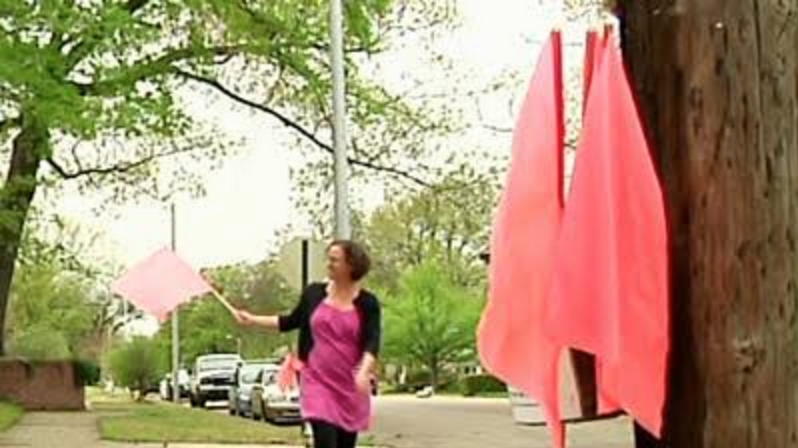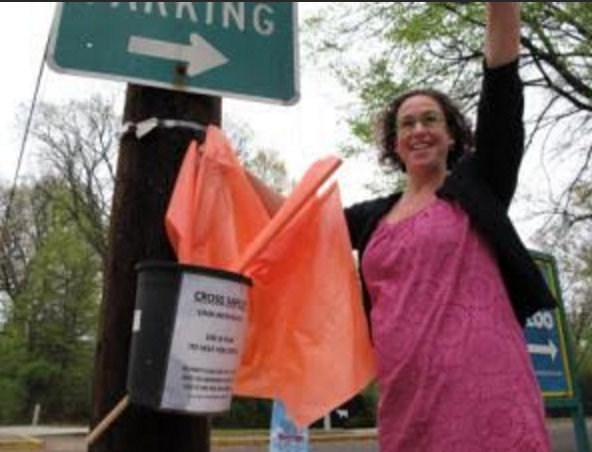Many factors contribute to our health, including genetic predispositions, access to quality medical treatment, and even the amount of sleep we get.
But have you ever thought about how your neighborhood affects your health?
“Social determinants of health” is the term for every external condition in which we are born, grow, work, and age. These include our relationships with family and friends, our employment opportunities, our socioeconomic status, and—of particular interest to ioby—our neighborhood amenities, like public transit, affordable fresh food, exercise options, and nutrition education. People who live in zip codes that have these things are likely to enjoy good health; in areas without them, residents are likely to struggle with with chronic illnesses like obesity and diabetes.
The good news about these neighborhood-based social determinants of health is that we have the power to change them! Every day, citizen leaders (like you!) are taking small steps toward big change by making their neighborhoods healthier, one block at a time. And this summer, ioby is partnering with the New York State Health Foundation to help local leaders in nine regions get their ideas for healthy change off the ground by providing fundraising training and dollar-for-dollar matching funds! Read more about the Healthy Neighborhoods Challenge and how to apply.
Want to get involved but need some inspiration? Our Healthy Neighborhoods Challenge Learn from a Leader blog series is profiling past ioby Leaders whose projects exemplify what we’re looking for from applicants: projects that focus on healthy food, active transport, green spaces, fighting disease, or some combination. Read on, and imagine how your neighborhood could benefit!

About the project:
Crosswalk flags are sweeping the nation! Pick up a brightly-colored, reusable flag before you cross a busy street, look both ways, then deposit it on the other side for the next pedestrian. The flag will increase your visibility in the moment, and raise general awareness that peds are around—and have the right of way.
Sarah Newstok, who installed crosswalk flags in her neighborhood, says, “Memphis has high rates of pedestrian injuries and fatalities. Disregard for pedestrian safety leaves our most vulnerable populations at risk: children, the elderly, people with disabilities, transit users, and low-income neighbors without access to cars. The flags are not a perfect solution, but I do think they help. We did get a crosswalk and a crosswalk sign at our intersection after installing the flags, so that’s progress!”

The steps:
- Picture it. Locate the intersections in your neighborhood that could benefit most from crosswalk flags. Busy places where there is a crosswalk already but no traffic light or stop sign are usually good candidates. In our case, we started with the intersection that’s the main entrance for Overton Park and the Memphis Zoo—it was crazy that it was so hard to cross there, as so many pedestrians use it!
- Picture it 2. Now locate some cute kids—I used my own cute children, of course—and take pictures of them looking sad because they can’t cross the street, then looking happy while using the flags to cross more safely. You can use these images to help explain and publicize your project.
- Reach out. I was able to raise all the money I needed in a day or two by pinging people on Facebook who I knew were frustrated with the same situation. “Hey fellow PTA mom—how do you like not being able to cross the street to reach the park?” Appeal to people first who you know have had the same problem. Then, as soon as they donate, shout them out on social media and ask, “Who’s next?” Keeping that process up is pretty easy, and it works!
- Design. Go out to the sites and figure out what you need. Each intersection is different, but you will always need to set your flags up with: 1) A narrow plastic bucket (to discourage people from throwing trash in it) with a hole in the bottom (to let rainwater drain); a wide PVC pipe with a cap on the end works well (just drill a hole in the cap!). 2) Something to affix the bucket to a nearby pole (clamps work for thin poles like stop signs; zip ties are better for thicker ones like telephone poles). 3) Some kind of signage to explain the deal. (Laminated paper doesn’t last long, but you can get a sturdier sign fabricated, or just write in permanent marker on the bucket. Whatever you do, make the instructions clear: “Grab flag, look, walk, wave, deposit on the other side.”)
- Place your order. Search online for “buy safety flags” and a bunch of results will come up. Try to get flags that match your city’s pedestrian signs for consistency: most are orange or bright yellow. Affix your buckets to the nearest pole to the crosswalk on both sides, so people are sure to see them.

Time/timing:
This is a quick project to start up—you could do it in a month—but the maintenance is ongoing. I still monitor the flags and replace them when they get faded (more common) or stolen (less common).

Budget:
– Flags (approx $2.50 per)
– Buckets (approx $10 per) (make sure they’re tall enough so the flags don’t fall out!)
– Markers to write on buckets or sturdier signage: $1 – $50 (depending on fanciness)
– Small metal clamps or zip ties (approx $1 per)
– UV protectant spray (approx $10 per bottle) (to keep flag fabric from fading)
Total cost of one bucket with five flags = approx $40 – $50 ($80 – $100 per crosswalk)

Additional resources:
I did not come up with this idea—lots of cities around the country are doing it! Just search online for “crosswalk flags” and see what they’re up to; systems keep improving. I particularly liked reading about Kirkland, Oregon’s PedFlags.

About the author:
Sarah Newstok lives in Overton Park with her husband, three kids, and dog named Cleo. She is in charge of Special Projects at Livable Memphis, and enjoys bike riding, spending time in nature, and adventurous travel.
Feeling fired up about crosswalk flags, or another project that could make your neighborhood healthier? Learn more about the Healthy Neighborhoods Challenge and apply for fundraising training and matching dollars now!